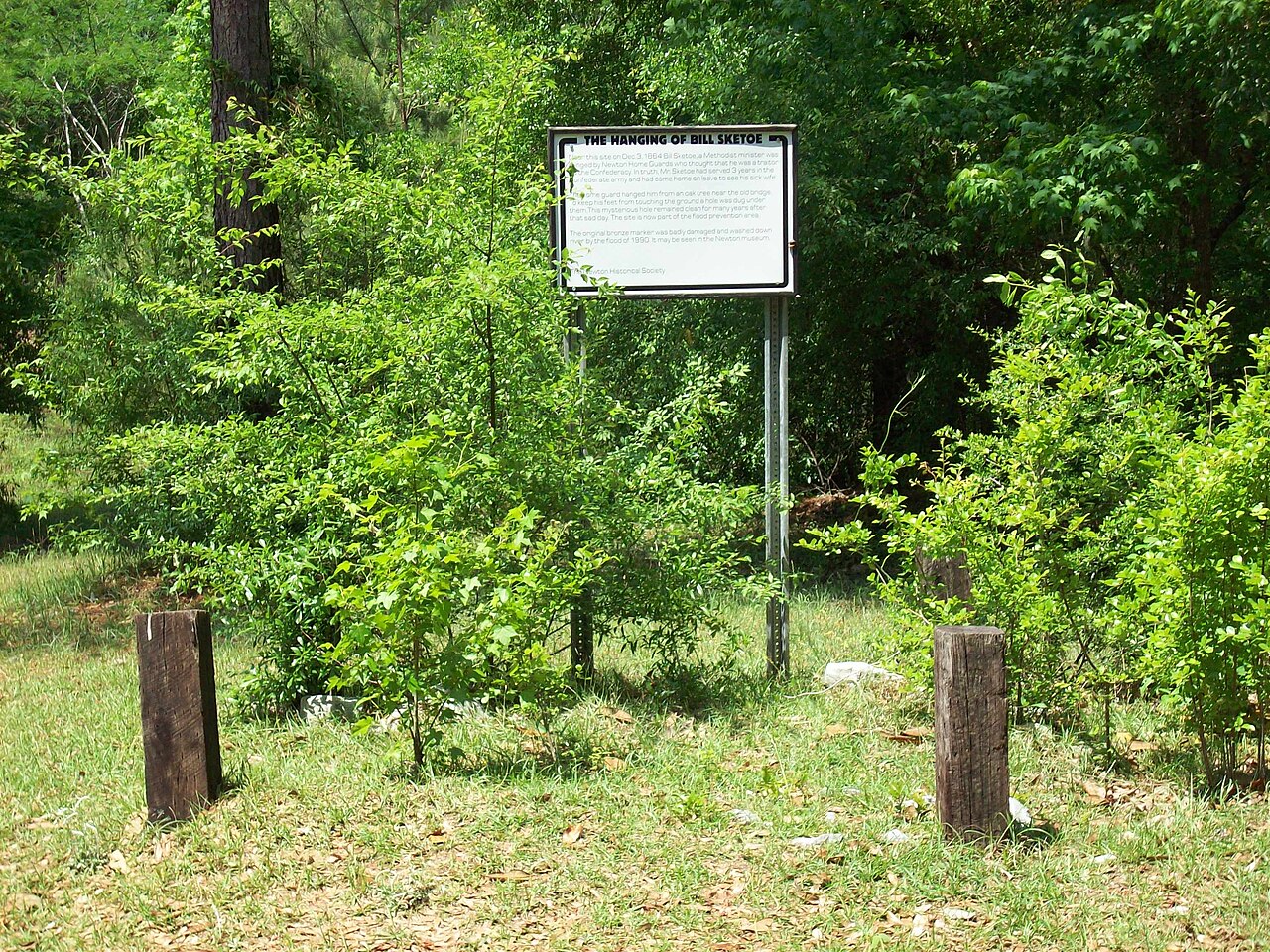The South is filled with haunting Civil War-era legends, but few are as eerie and enduring as the tale of Bill Sketoe and Sketoe’s Hole Memorial in Newton, Alabama. This mysterious site is tied to the tragic execution of a Confederate soldier and a supernatural phenomenon that has puzzled locals for generations. The story of Bill Sketoe’s hanging in 1864 has been passed down through folklore, making Sketoe’s Hole one of Alabama’s most famous ghostly legends.
This article explores the history, the legend, and the lasting impact of Sketoe’s Hole, blending historical accounts with paranormal folklore.
Who Was Bill Sketoe?
William “Bill” Sketoe Sr. was a Confederate soldier who lived in Newton, Alabama. Though details about his past vary, many accounts suggest that he was a devoted husband and father. Some say he left the battlefield to care for his sick wife, while others claim he had abandoned the Confederate cause entirely. Regardless of the reason, his absence from duty led to accusations of desertion, a crime punishable by death.
By late 1864, tensions were high in Alabama as the war neared its end. Groups known as the “home guards”, Confederate sympathizers responsible for capturing deserters, became increasingly brutal. Sketoe, unfortunately, became one of their victims.
The Execution and the Mysterious Hole
On December 3, 1864, Sketoe was captured by the Dale County Home Guard, led by Captain Joseph R. Breare, and sentenced to be hanged near the Choctawhatchee River in Newton. However, there was a problem—Bill Sketoe was a tall man, and when the executioners attempted to hang him from a tree, his feet touched the ground.
In response, the executioners dug a hole beneath him to ensure the hanging was successful. This hastily-dug hole soon became the center of Alabama’s most famous ghost story.
After Sketoe’s execution, something strange began happening. The hole beneath the tree refused to stay filled. Locals tried to cover it with dirt, sticks, and debris, but the hole would always reappear—no matter how many times it was filled. Over time, people began to suspect supernatural forces were at play, believing that Sketoe’s spirit was responsible for the mysterious hole.
For a visual recounting of this legend, you might find the following video insightful:
The Legend of Sketoe’s Hole
The persistent hole became a chilling local legend, passed down through generations. Some believed that Sketoe’s ghost haunted the site, keeping the hole open as a reminder of his unjust execution. Others claimed that strange lights and whispers could be heard near the hanging tree, adding to the eerie atmosphere.
The legend was further popularized in Kathryn Tucker Windham’s book, 13 Alabama Ghosts and Jeffrey, which introduced Sketoe’s story to a wider audience. Her retelling solidified Sketoe’s Hole as one of Alabama’s most famous ghost stories, drawing paranormal investigators, history buffs, and curious travelers to Newton.
Preserving the Legend
In 1979, construction of a new bridge over the Choctawhatchee River altered the original site of Sketoe’s hanging. Further changes in 1990, due to riverbank reinforcement, led to the permanent covering of the infamous hole. To honor this unique blend of history and folklore, the town of Newton established a memorial near the original site. Visitors can find a historical marker detailing Sketoe’s story and the legend of the persistent hole.

For those interested in a deeper dive into this legend, the “One Nation Under Crime” podcast offers an insightful episode titled “1864: William ‘Bill’ Sketoe Sr & Kathryn Tucker Windham.” In this episode, hosts Kayla and Leah chronologically explore true crime cases and historical events, providing a detailed account of Sketoe’s story and its cultural impact. Their discussion sheds light on the historical context and the evolution of the legend over time.
You can listen to this episode here.
